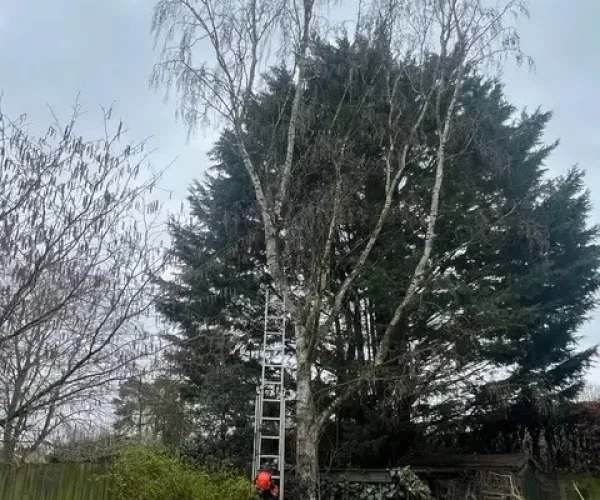As the days grow shorter and the temperatures drop, many homeowners and property managers might be inclined to put tree maintenance on hold until spring.
However, this overlooks a crucial opportunity for tree care. In this blog, we’ll explore why winter is the ideal time for tree reduction and the numerous benefits it offers to your garden or outside space.
Reduce the stress on your tree
Winter is the season when most deciduous trees are in a state of dormancy, meaning they’re not actively growing.
This natural state of rest is advantageous for tree reductions because it reduces the stress on the tree.
Trimming, pruning, or reducing a tree’s canopy during dormancy can minimize the impact on the tree’s overall health and vitality.
Improved visibility for tree surgery
With the leaves gone, the tree’s structure becomes more visible during the winter.
Arborists and tree care professionals like ourselves can better assess the tree’s shape, identify structural issues, and determine the optimal points for reduction.
This enhanced visibility allows for more precise and effective tree surgery and pruning.
Reduced risk to Wildlife
We love our animals and wildlife in Britain, and we have a commitment to taking special precautions to avoid any disruptions to their habitats.
During winter, many species of birds and wildlife find refuge in trees. Performing tree reductions in the winter, rather than the active growing season, minimizes the disruption to wildlife habitats.
We can take measures to protect nesting sites and ensure the safety of both the tree and its inhabitants.
Snow and ice load management
One of the significant concerns during winter is the weight of snow and ice on tree branches. Overloaded branches can lead to breakage and damage.
Reducing the canopy with tree reduction in advance can help trees withstand the added weight and reduce the risk of winter damage.
Winter is ideal for Crown Thinning
Crown thinning is a vital component of tree reduction that involves selectively removing certain branches from the upper part or “crown” of a tree.
Crown thinning is particularly effective at improving air circulation within the tree’s canopy. Therefore, during winter, improved air circulation helps prevent the build-up of moisture, which can lead to fungal diseases.
The dry winter air allows the pruning wounds to heal more quickly, further reducing the risk of infection.
Our Experience
In our experience, we find that our clients gardens benefit hugely from tackling tree reduction in winter, rather than waiting for warmer temperatures.
If you need some friendly advice from our team regarding tree reduction, or anything winter garden related, get in touch with us now for a free quotation – and don’t forge to send us some pictures!



